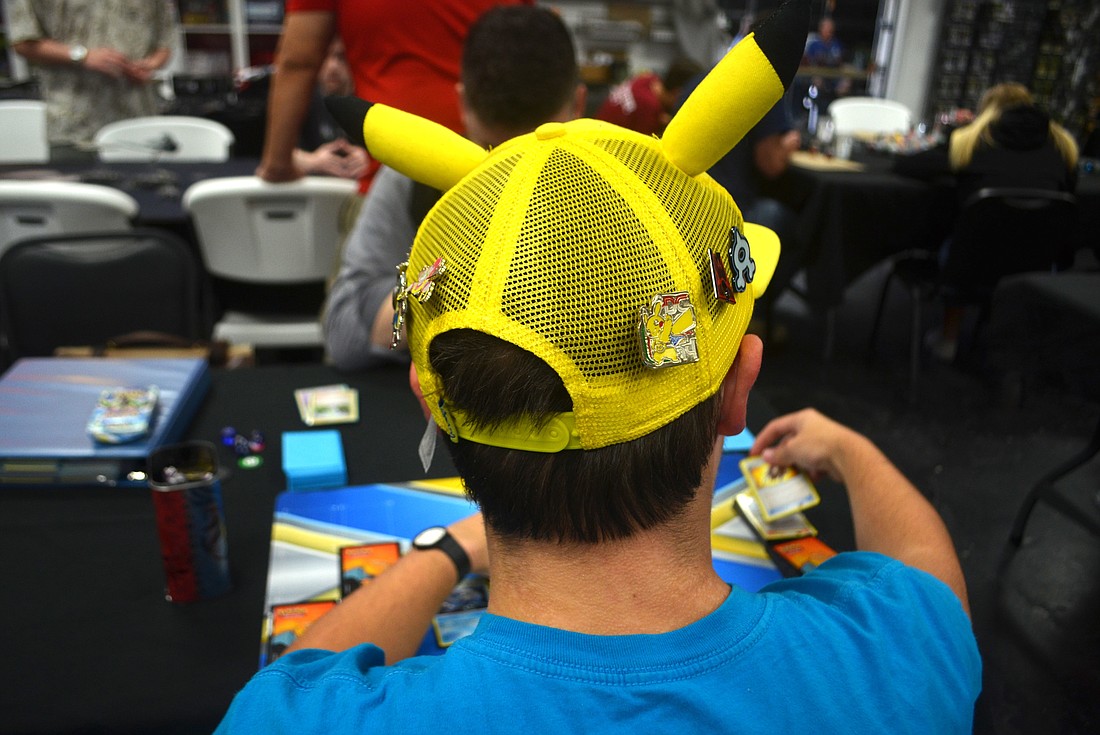- November 23, 2024
-
-
Loading

Loading

While “Pokemon Go” has largely come and gone, a more traditional version of the game proves it has staying power among Sarasota’s Pokemon loyalists.
Dark Side Comics regular Elbert Platt calls the store the last mecca for comic book and gaming enthusiasts in Sarasota. For many, Platt included, the store is more than just its merchandise.
Behind the crowded shelves, the store opens up to three rows of tables, each row four tables deep, each draped with a black tablecloth.
It’s a place for people to gather, play games or just hang out. But from 1:30 to 5:30 p.m. Sundays, it’s an arena.
Dark Side, at 935 N. Beneva Road, began hosting Sunday afternoon Pokemon tournaments two years ago, long before the brand’s recent resurgence.
Chrissy Johnson became a regular at the tournaments earlier this year with her 8-year-old son, Taylor Johnson.
Johnson said she was the only female routinely playing in the group when she began, but she’s seen some more faces at their Sunday afternoon ritual as of late, both male and female.
Software developer Niantic Inc., based in San Francisco, released a mobile version of Johnson’s beloved card game in July called “Pokemon Go.” Using GPS, the app allows players to catch and collect Pokemon characters on their phones in real time.
The game caught fire among Pokemon enthusiasts. Those who played the video game or collected the cards started to engage with Pokemon in a way that could not have been imagined when the brand premiered in the late 1990s.
Although the game pushed the boundaries of what many thought was possible on a mobile platform, some of Dark Side’s frequent competitors say the game lacked the strategic elements that are native to the card game.
“‘Pokemon Go’ being a mobile game was very casual,” Platt said. “I think a lot of people missed that competitive edge because there is nothing competitive about it.”
The card game involves two players, each with a deck of Pokemon cards. Players don’t always know what is in the deck and are only allowed to look at their cards as they draw them. Each card represents a different character, with different powers that make it more or less lethal depending on the character it is facing.
This makes the card game more like a game of chess. “Pokemon Go,” is more like a game of catch.
Alex Freeman was introduced to Pokemon when the video game came out in the late 1990s and became interested in collecting the cards when he was 9. He learned to play to the card game two years ago when he started going to Dark Side’s tournaments.
He wears a bright yellow Pikachu hat, with its pointed, black tipped ears, while playing Ryan Stanberry in the first round of a recent tournament. From the look on Stanberry’s face, Freeman was doing very well.
At 16, one might think Freeman represents “Pokemon Go’s” ideal demographic — a digital native already interested in the brand. Yet, Freeman and many of the other regular competitors were relatively unfazed by the game.
Dark Side regulars saw some new faces at their Sunday afternoon gatherings, but for the most part the tournaments attract the same group as always.
“For the loyal fans, I don’t think ‘Pokemon Go’ had a huge influence on them,” Platt said.
He’s wearing a Pokemon shirt while sitting over binders filled with Pokemon cards open on the table. He said that although the game didn’t influence longtime tournament players, it did change the brand’s reputation.
Platt began collecting the playing cards in junior high and continued collecting through high school — he just wasn’t telling anybody about it. Then the game was considered geeky and taboo. Now, Platt thinks more recent versions of the brand has changed that perception.
“I wore a Pokemon shirt today. I would not have done that in high school,” Platt said.
Platt said “Pokemon Go” could not replace the competition and camaraderie that awaits players behind the shelves.
“We’re not just a bunch of people that hang out. We’re a family,” Platt said.